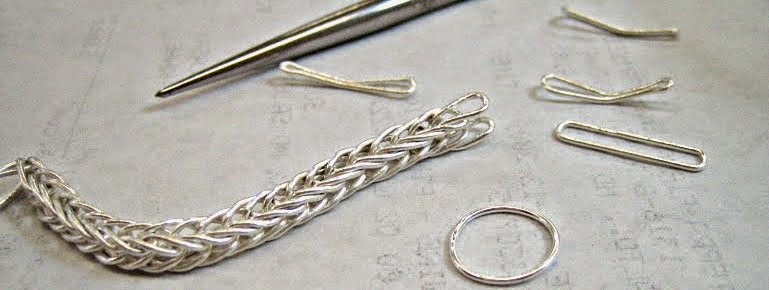 |
| Annealing wire |
The first assignment doesn’t sound difficult until you consider the quality of your work. The quantity seems very reasonable. Fuse 20 rings of 5/16” diameter and 10 rings of 7/16” diameter. The fusing is the tricky step and the reason I am taking this class. The first rings I cut with scissors and used a 00 torch tip which is the smallest. This took a very long time to heat up to fusing. So, I used a larger, 0 torch tip, on the second batch of rings. This seemed to heat up too fast, so I adjusted the flame. I may have 10 good rings to show for class or one half the required amount. I am not certain if a rough surface in the fuse area is considered good or bad. If rough is bad, then I am way off my target of 20 rings in the 5/16th inch size. I made about 20 rings of the 7/16” size and may have 10 passable rings, but again that depends on the judgement criteria.
The workshop hours available to me were Thursday evening and Saturday afternoon. I still did not have the 22 gauge silver wire by Thursday afternoon. The two supply stores in town had received it, but I would have had to leave work to get it. The wire and the workshop would have to wait until Saturday. I made a phone call to have the wire held for me. Otherwise, it would have been sold out by Saturday. I went out to eat with a friend on Thursday evening and tried to relax. The final class supplies tally for the week was another $40 spend on small tools and silver wire.
We have to anneal the wire before and after it is wound. Annealing softens the metal so it can be worked again. This is done by heating. We are working with very thin, 22 gauge, pure silver wire, so being able to tell when the silver has reached the annealed point is crucial. We usually turn down the lights to see if the glow is retained by the metal when the flame is removed. I can’t share our class with you but I found a video by ArtJewelry magazine showing the annealing of sterling silver sheet. It is a similar process. It is free to register to see the videos. Actually, ArtJewelry magazine has just produced a series of how-to metalworking videos and a blog about how the videos were made. The blog is very interesting and no registration is needed to read it. You can get to the video links from the blog link here:

No comments:
Post a Comment
Comments are welcome